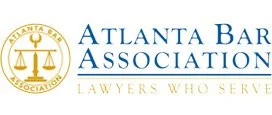Understanding OSHA’s Impact on Work Injury Legal Claims
Key Points:
- OSHA standards set forth the rights of employees and the duties of employers to keep workers safe from injury and illness.
- In addition to fines and other penalties, an employer who violates OSHA regulations may face a negligence lawsuit from the injured employee and have to pay compensation beyond what is covered under a workers compensation claim.
- OSHA regulations are considered minimum standards for workplace safety, so an injured employee can still win a negligence claim even if the employer did not violate federal regulations.
- If you have been injured at work and are considering filing a legal claim against your employer, reporting the injury to OSHA may benefit your claim because OSHA investigative findings are admissible evidence in court.
Table of Contents
Given that over two million work-related injuries occur every year in the United States, initiatives and regulations have been implemented in nearly all industries to make job sites safer. The federal agency responsible for protecting workers is called the Occupational Safety and Health Administration (OSHA), and OSHA workplace standards cover almost all private-sector employers and some public-sector ones. (Note that OSHA does not cover self-employed workers.)
OSHA applies in all 50 states, and many states have their own plan to comply with or enhance regulations imposed at the federal level. Generally, OSHA standards set forth the rights of employees and the duties of employers to keep workers safe from injury and illness. These health and safety regulations establish criteria for working conditions based on the industry and provide necessary training and education to encourage compliance and teach employees how to protect themselves.
Why Are OSHA Standards Essential for Workplace Safety?
OSHA standards are essential for workplace safety because they provide employers with clear guidelines on how to protect their employees from a wide range of hazards, including:
- chemical hazards, such as exposure to toxic chemicals, flammable substances, and harmful dusts and fumes;
- physical hazards, such as exposure to noise, radiation, and extreme temperatures;
- biological hazards, such as exposure to bacteria, viruses, and other infectious agents; and
- ergonomic hazards, such as tasks that require repetitive motions, awkward postures, or heavy lifting.
Violating OSHA standards can directly contribute to work-related injuries. For example, workers are more likely to become ill from exposure to hazardous chemicals if their employers do not comply with the OSHA standard for hazard communication. Similarly, employers who do not comply with OSHA’s standard for machine guarding are more likely to have employees who suffer limb amputations.
Since it was established in 1971, OSHA has significantly improved workplace safety in our country. For example, the OSHA standard for fall protection has helped to reduce the number of workplace fatalities from falls by over 50 percent. Even though OSHA standards may not always be easy to meet, employers who follow these regulations help create a safer and healthier workplace while protecting themselves from work injury claims.
Consequences for Employers Who Violate OSHA Standards
OSHA typically enforces its regulations by issuing fines for violations, and the penalty varies depending on the severity of the violation. The maximum penalty allowed is $15,625 per violation and $156,259 per violation for willful or repeated violations. Employers can also be assessed up to $15,625 per day for failure to abate by the deadline set by OSHA. Note that these are maximum penalties, and the actual penalty amount will depend on a number of factors, including the severity of the violation, the employer’s history of compliance, and the size of the employer’s business.
In certain situations, OSHA may even refer cases for criminal prosecution. If convicted, employers may face fines up to $250,000 for individuals and $500,000 for corporations, as well as imprisonment for up to six months. In addition to civil and criminal penalties, employers can suffer other negative consequences for violating OSHA standards.
For example, employers with a history of OSHA violations may have to pay higher workers compensation premiums. OSHA violations can also damage an employer’s reputation, making it difficult to hire and retain employees and customers. If OSHA issues a work stoppage order, the employer may be prohibited from operating a work site until the violation is corrected.
An employer who violates OSHA regulations may also face a negligence lawsuit from the injured employee and have to pay compensation beyond what is covered under a workers compensation claim. Workers compensation insurance, which is a no-fault system, covers most expenses for an employee’s work-related injuries, including medical bills, lost wages, and disability.
However, if an employee is injured because of their employer’s negligence, they may also have a claim for costs such as pain and suffering, lost future earnings, or punitive damages. While evidence of an OSHA violation does not automatically prove that the employer was negligent, it can give the employee a higher chance of winning an injury claim if they can show that the violation caused the accident.
How Can OSHA Investigations Impact a Work Injury Lawsuit?
After a workplace injury is reported to OSHA, it may result in an onsite inspection or an investigation. During the investigation, OSHA may collect photos or videos of the work site, witness statements, expert opinions, results of testing or monitoring, and documents related to the employer’s health and safety program.
An OSHA finding that an employer violated safety standards can be strong evidence of negligence in a lawsuit and is admissible in Georgia courts. OSHA investigations can also be helpful in calculating damages because investigators often interview the injured employee and their medical providers to get a detailed understanding of the injuries and their impact on the employee’s life.
Depending on the findings, an OSHA investigation can lead to a quicker settlement because the employer will likely want to avoid a costly trial and verdict. In addition to personal injury lawsuits, OSHA findings can also support an employee’s claim for workers compensation benefits or help prove a wrongful death lawsuit filed by the employee’s family.
Can an Employer Still Be Negligent without OSHA Violations?
Yes. OSHA regulations are considered minimum standards for workplace safety, so an injured employee can still win a negligence claim even if the employer did not violate regulations.
Though evidence of OSHA violations can be helpful in building a claim, there are other types of evidence that a plaintiff can use to prove negligence. For example, if an employee was injured because a ladder they were using was not properly secured, they can file a negligence claim against their employer even if OSHA does not have a regulation that requires it.
To win a negligence claim, the employee must show that the employer had a duty of care to provide a safe workplace, which means taking reasonable steps to identify and eliminate hazards. The employee must also show that the employer breached this duty of care, and that breach caused the employee’s injury. Proving an OSHA violation is not required under this standard, and many work injury lawsuits happen without OSHA involvement.
Industries Regulated by OSHA
Almost all private-sector employers and workers across all industries in the United States are covered by OSHA regulations. Certain territories and jurisdictions under federal authority are also covered, but Georgia state and local government employers/employees are not covered by federal OSHA standards (and Georgia does not have a “state plan”).
Though OSHA standards apply across all types of industry, certain industries are more heavily regulated because they have a higher risk of work-related injuries and illnesses. The most heavily regulated industries are construction, manufacturing, healthcare, transportation, and agriculture.
OSHA regulates workplace health and safety by setting standards, enforcing those standards, and encouraging compliance through outreach activities. OSHA develops and issues standards based on research and a consensus-building process that involves representatives of industry, labor, and government. Once finalized, OSHA standards are legally enforceable.
OSHA enforces its standards through inspections, investigations, and citations. OSHA inspectors proactively visit workplaces to assess compliance with regulations. If they find violations, they may issue citations to employers. OSHA also investigates accidents and fatalities to help identify systemic safety and health problems and to develop new standards. OSHA may also conduct inspections and/or investigations based on employee complaints or the employer’s history of compliance.
Examples of OSHA Regulations
OSHA regulations are divided into four categories, with “general industry” standards referring to all industries not included in agriculture, construction, or maritime standards. Some common examples of OSHA regulations include:
- Fall Hazards
OSHA standard 29 CFR 1926.503 outlines training requirements for employees who may be exposed to fall hazards in all industries. This standard mandates that employers provide a comprehensive training program that covers recognition of fall hazards, fall protection systems and procedures, inspection and maintenance of fall protection equipment, rescue procedures, and fall protection plans. The program should be provided in a language understood by the employee and tailored to their specific job duties and hazards they may encounter. Employers must maintain certification records for each employee’s fall protection training, which should include the employee’s name, date of training, and signature of the trainer.
- Machine Guarding
OSHA standard 29 CFR 1910.212 outlines the general requirements for machine guarding in all workplaces covered by OSHA, emphasizing the importance of protecting employees from hazards associated with operating machinery and equipment. This standard also provides specific guidelines for various types of machine guarding, including barrier guards, interlocked guards, two-hand tripping devices, and electronic safety devices. All guards should be designed and constructed to prevent employees from having any part of their body in the danger zone during the operating cycle.
- Eye and Face Protection
OSHA standard 29 CFR 1926.102 outlines the general requirements for eye and face protection in construction workplaces. This standard mandates that employers provide appropriate eye and face protection whenever employers are exposed to hazards such as flying particles, molten metal, liquid chemicals, chemical gases, or potentially injurious light radiation. Examples of eye and face protection include safety glasses, goggles, face shields, and welding helmets. Adhering to these guidelines helps prevent eye burns, chemical burns, and vision loss.
Must Work Injuries Be Reported to OSHA?
Though employees have the right to report work-related injuries to OSHA—and employers must inform them of that right—they are not required to do so. However, if you have been injured at work and are considering filing a legal claim against your employer, reporting the injury to OSHA may benefit your claim.
OSHA may conduct an inspection or investigation following the report, which can be used as evidence in your work injury claim. Any experienced personal injury attorney would advise you to report an OSHA violation following a preventable work accident.
To make a report, you can call OSHA at 1-800-321-OSHA or submit electronically using the reporting application located on OSHA’s public website www.osha.gov. You can also file a report in person at the OSHA area office that is nearest to the site of the accident.
Keep in mind that even though employees are not required to report injuries, employers must report certain types of injuries to OSHA. Specifically, employers must report any work-related fatality within 8 hours and any work-related inpatient hospitalization, amputation, or loss of an eye within 24 hours.
In addition, employers with more than 10 employees in industries classified by OSHA as having high injury and illness rates must keep records of work-related injuries and illnesses. These records must include information about the injury or illness, the employee involved, and the circumstances of the incident.
















